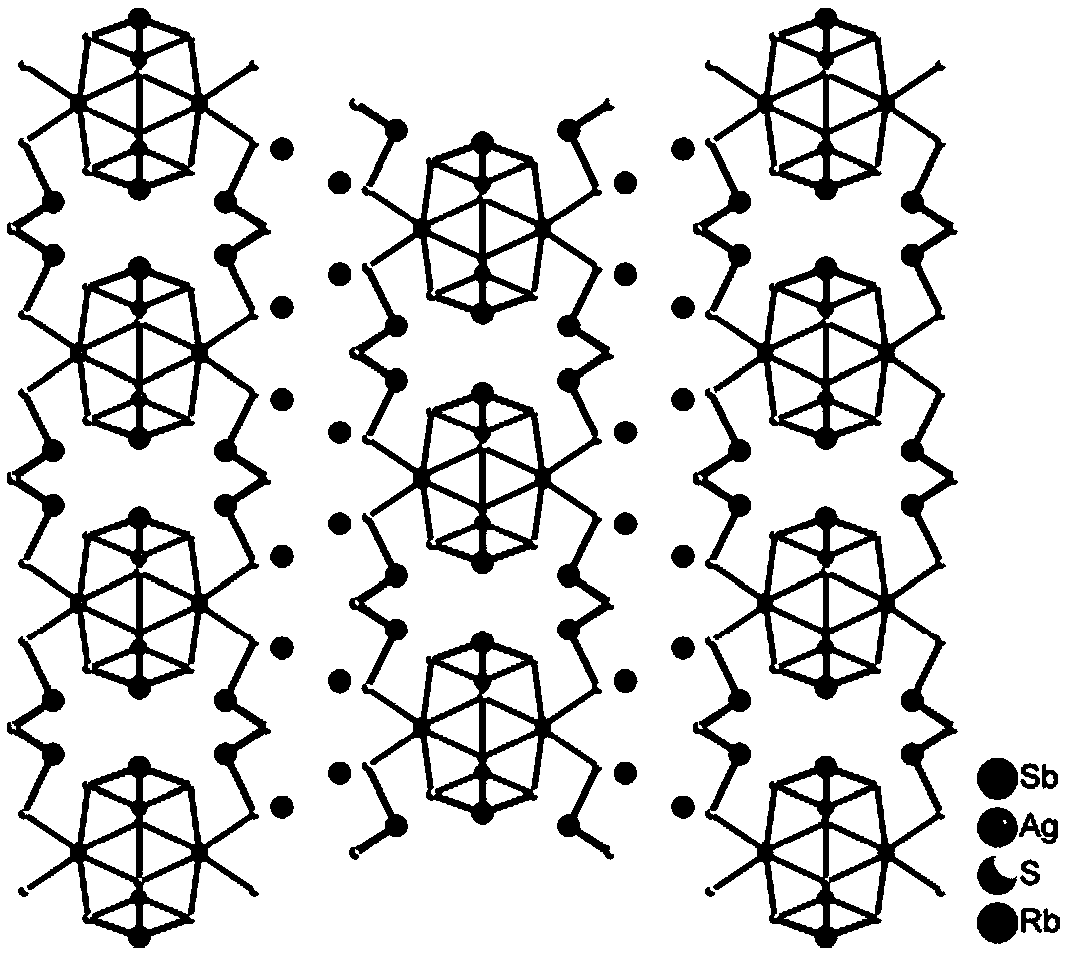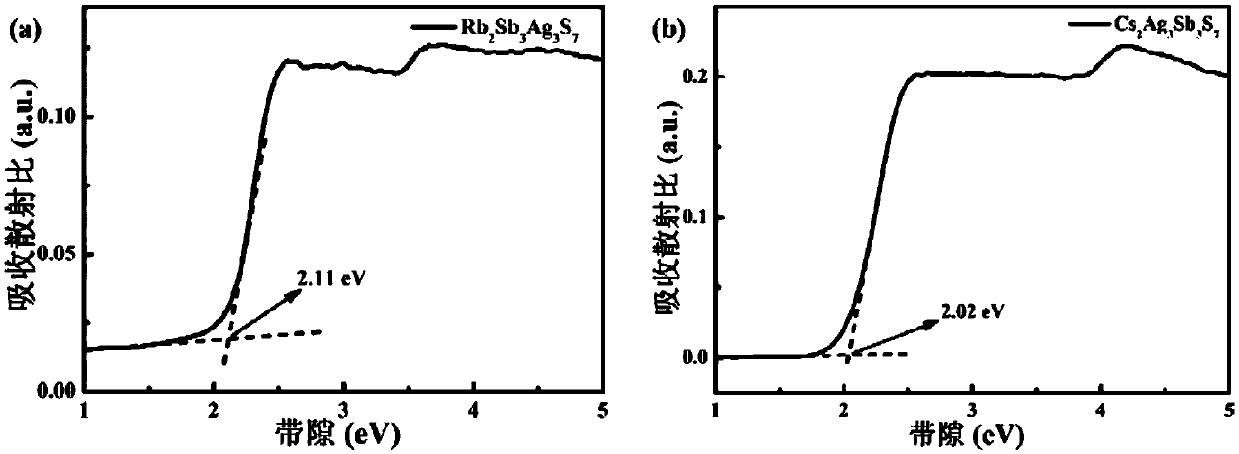Infrared non-linear dissimilar metal sulfantimonate optical crystals as well as preparation and application thereof
A metal thioantimonate and optical crystal technology, which is applied in nonlinear optics, optics, crystal growth, etc., can solve the problems of difficult phase matching, difficult preparation of pure phase of compounds, low laser damage threshold, etc., and the method is simple Effect
- Summary
- Abstract
- Description
- Claims
- Application Information
AI Technical Summary
Problems solved by technology
Method used
Image
Examples
Embodiment 1
[0031] The raw materials rubidium carbonate or cesium carbonate, silver powder, antimony powder, sulfur powder, ionic liquid and organic amine are sealed in a polytetrafluoroethylene-lined reactor for ionothermal reaction. The reaction temperature is 140-240°C and the reaction time is 1-2. 10 days, then slowly cool down to 30°C, the cooling rate is 0.5-30°C / day, filter and wash, you can get M 2 Ag 3 Sb 3 S 7 , the specific operation is as follows: mix the rubidium (cesium) source, silver source, sulfur source, antimony source, ionic liquid and organic amine according to a certain proportion to obtain the initial gel mixture, and seal the initial gel mixture in 25mL polytetrafluoroethylene In the lined reaction kettle, put it into a box-type resistance furnace, crystallize at the crystallization temperature for a period of time, filter, wash, and dry to obtain yellow needle-like M 2 Ag 3 Sb 3 S 7 Two crystal samples. Table 1 shows the relationship between the types and p...
Embodiment 2
[0052] Adopt the preparation method similar to embodiment 1, difference is:
[0053] (1) The rubidium source or cesium source used is rubidium chloride, the silver source used is silver nitrate, the antimony source used is antimony chloride, the sulfur source used is sulfur powder, and the ionic liquid used is 1-butyl- 3-methylimidazolium chloride salt, the organic amine used is propylene diamine, rubidium element, silver element, antimony element, sulfur element, 1-butyl-3-methylimidazolium chloride salt and propanediamine in the initial gel mixture The molar ratio of amine is Rb:Ag:Sb:S:1-butyl-3-methylimidazolium chloride:propylenediamine=1:5:5:50:50:50;
[0054] (2) The adopted crystallization temperature is 140° C., and the crystallization time is 100 hours.
[0055] After testing, the prepared compound Rb 2 Ag 3 Sb 3 S 7 The crystal has a large frequency doubling effect, respectively KH 2 PO 4 (KDP) crystal 2.3 times and 2.6 times.
Embodiment 3
[0057] Adopt the preparation method similar to embodiment 1, difference is:
[0058] (1) The rubidium source or cesium source used is rubidium hydroxide, the silver source used is silver iodide, the antimony source used is antimony sulfide, the sulfur source used is antimony sulfide, and the ionic liquid used is 1-butyl-3- Methylimidazolium chloride salt, the organic amine used is butanediamine, the rubidium element, silver element, antimony element, sulfur element, 1-butyl-3-methylimidazolium chloride salt and butanediamine in the initial gel mixture The molar ratio is Rb: Ag: Sb: S: 1-butyl-3-methylimidazolium chloride: butanediamine = 2: 10: 5: 15: 20: 50;
[0059] (2) The adopted crystallization temperature is 180° C., and the crystallization time is 60 hours.
[0060] After testing, the prepared compound Rb 2 Ag 3 Sb 3 S 7 The crystal has a large frequency doubling effect, respectively KH 2 PO 4 (KDP) crystal 2.3 times and 2.6 times.
PUM
| Property | Measurement | Unit |
|---|---|---|
| wavelength | aaaaa | aaaaa |
Abstract
Description
Claims
Application Information
 Login to View More
Login to View More - R&D
- Intellectual Property
- Life Sciences
- Materials
- Tech Scout
- Unparalleled Data Quality
- Higher Quality Content
- 60% Fewer Hallucinations
Browse by: Latest US Patents, China's latest patents, Technical Efficacy Thesaurus, Application Domain, Technology Topic, Popular Technical Reports.
© 2025 PatSnap. All rights reserved.Legal|Privacy policy|Modern Slavery Act Transparency Statement|Sitemap|About US| Contact US: help@patsnap.com



